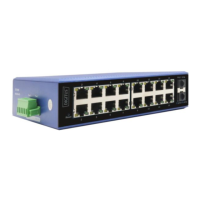the dynamic characteristics of voice VLAN can add ports to multiple VLANs behind
the scenes. The access port has the following characteristics:
There is only one VLAN, port VLAN (also known as access VLAN), which is a
member of 1 by default.
accept unlabeled frames and C-labeled frames,
Drop all frames in unclassified access VLAN,
All frames to the exit are sent unmarked.
Trunk:
The trunk port can traffic multiple VLANs at the same time and is usually used to
connect to other switches. The trunk port has the following features:
By default, the trunk port is a member of all existing VLANs. This can be achieved
by using a limited number of VLANs.
Unless enabled on the port of VLAN relay, divided into different VLANs, and the
frame of that the port is not a member will be discarded.
By default, all frames, but VLAN (also known as local VLAN) frame tags classified
into ports get about exits. The frames classified to the port VLAN do not get the
exit of c-tag,
The exit marker can change all frames of the marker, in which case only the entry
of the marked frame is accepted,
VLAN trunking may be enabled.
Hybrid:
The hybrid port is similar to the trunk port in many ways, but adds additional port
configuration capabilities. In addition to the characteristics described for the relay
port, the hybrid port also has the following capabilities:
It can be configured as VLAN tag or unknown, C-tag all, S tag all, or S-custom tag
all.
The inlet filtration can be controlled.
The exit annotation and configuration of the access frame can be configured
independently.

